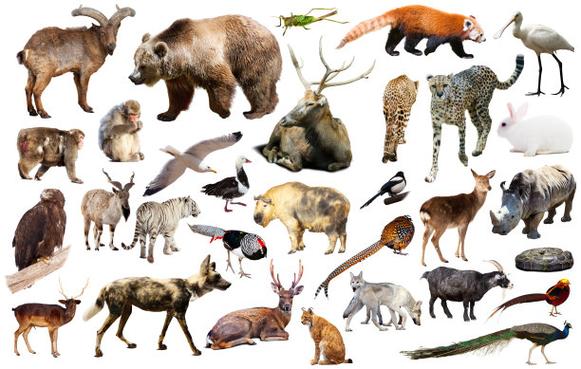In nature, animals' visual systems show significant differences due to their habitats, living habits, and biological evolution. Some animals have highly developed color vision systems that can distinguish a variety of colors; while others have relatively limited vision and cannot even see specific colors. Green may be an indistinguishable color in many animals.
This article will reveal which animals can't see green and explore their visual characteristics and their impact on survival.
The color vision of most animals depends on the photoreceptors in the retina - cones. Cones respond to different wavelengths of light, helping animals distinguish colors. Humans typically have three types of cones, sensitive to red, blue, and green, and are therefore called trichromats. In contrast, many animals have simpler color vision systems, and some can't even see green.

Dogs have a different visual system than humans. They are dichromats and have only two types of cone cells. This means that dogs can see blue and yellow, but not red and green. In the eyes of dogs, green is usually seen as gray or yellow. Therefore, many toys or environments with green do not have obvious color differences to dogs.
Like dogs, cows are dichromats, with cones that are sensitive to blue and yellow. This makes them unable to see green, and even red is as hard to tell apart as green. Therefore, the traditional saying that the red cloth angers the cow is not true, as the cow is actually reacting aggressively to the movement of the cloth, not the red color.
Most marine mammals, such as whales and dolphins, live underwater and have very different color vision than land animals. They are usually monochromats, meaning they have only one type of cone and cannot tell apart any color, including green. This visual property makes them rely more on changes in brightness than color in dark underwater environments.
Sharks’ visual systems also lack color perception, especially the color green. Their eyes are adapted to hunting in deep-sea environments and can detect brightness and motion, but their color resolution is extremely low. This makes sharks rely more on other senses, such as smell and electroreceptors, rather than color vision when identifying prey.
Mice are also dichromats, able to see blue and yellow, but unable to recognize red and green. Mice’s vision is primarily adapted to nocturnal activity, so their photoreceptors are more adapted to detecting brightness and motion rather than color.
The evolution of animal vision is closely related to their habitat and lifestyle. For nocturnal or aquarium/52-marine-animals.html">marine animals, color perception is often less important than brightness and motion. Therefore, many animals have abandoned some of their color perception abilities during evolution in order to focus their visual functions on changes in light intensity and capturing movement.
For example:
Marine animals: In the deep sea, light is greatly reduced and color discrimination is almost meaningless. Animals such as sharks and whales rely more on visual sensitivity in low-light environments than on color perception.
Nocturnal animals: Animals like mice move in the dark and rely more on sensitivity to light and shadows than on color recognition.
Although these animals cannot see green, this does not mean that their visual ability is weak. On the contrary, their visual perception abilities in other aspects (such as brightness and movement) are usually very sharp to compensate for the lack of color vision. For example:
Dogs: Although they cannot see green, they can perceive movement and changes in the environment through strong brightness contrast.
Whales: Although they cannot see green, they are very sensitive to light changes and electric fields in the underwater environment, which helps them hunt in dark waters.
Although humans have powerful color perception and can see a variety of colors including green, many animals have chosen different paths in visual evolution. Animals such as dogs, cows, whales, sharks and mice cannot perceive green due to their unique living environments and needs. This difference in visual characteristics not only shows the diversity of nature, but also reminds us to understand the unique way animals perceive the world.
animal tags: Dog Mice Cow Shark Whale Dolphin
We created this article in conjunction with AI technology, then made sure it was fact-checked and edited by a Animals Top editor.